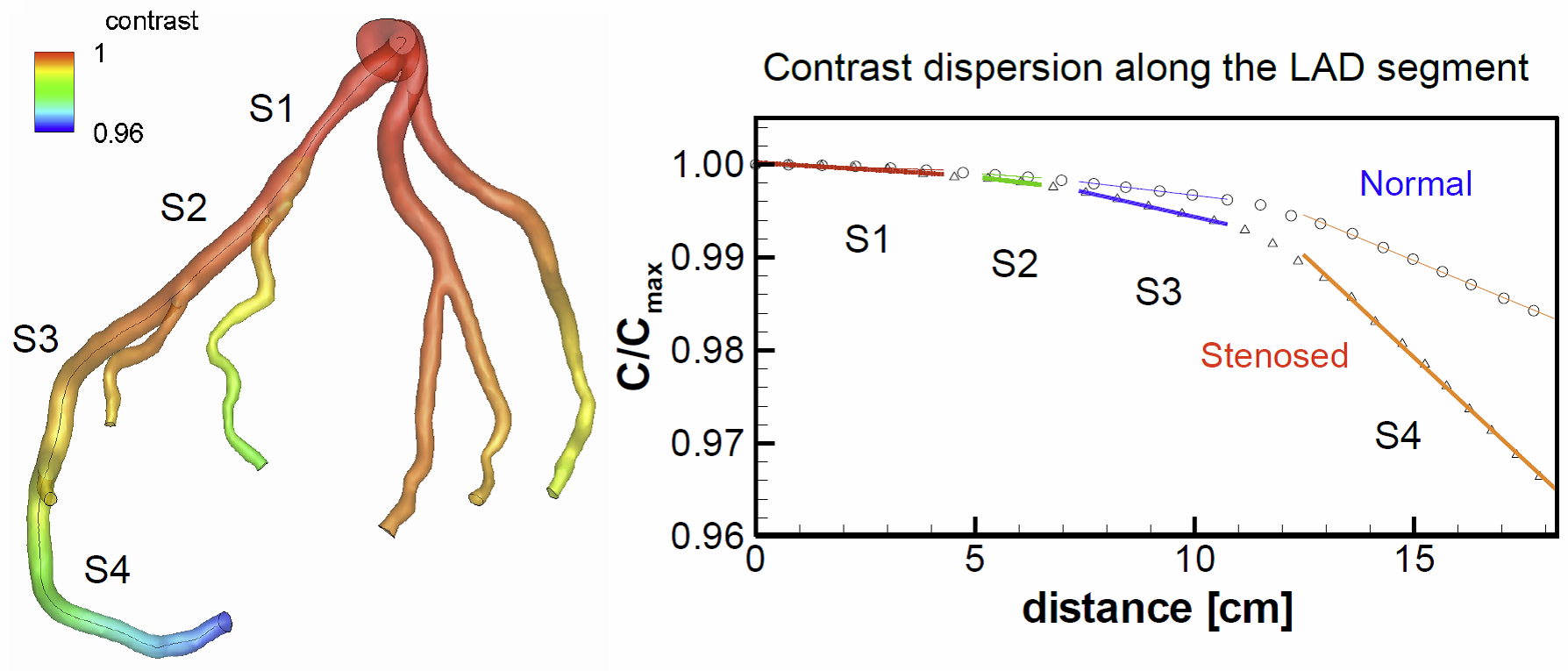Vascular Flows
Decoding Contrast Dispersion Patterns in Stenosed Coronary Arteries
Coronary Artery Disease (CAD) is the number one cause of death in both men and women in U.S. Over half a million patients across the country go through a form of surgical procedures to treat CAD. A computed tomography coronary angiography (CTCA) is a non-invasive diagnostic procedure to visualize the artery and specifically the lumen area of coronary arteries. However, this approach to angiography does not provide any quantitative information about the arterial flow, which is a more direct measure of the functional significance of the arterial lesion and the resulting ischemia. Information on the flow has traditionally been obtained from catheterization which is invasive and expensive.
We are developing new methods that allows direct quantitative coronary flow measurement by decoding coronary contrast dispersion patterns. The research involves (a) the use of custom CFD programming to isolate mechanisms of spatial variation in contrast concentration as a function of coronary vessel length in anatomically correct models of the coronary vessel; (b) simple and anatomically correct phantom and animal experiments to correlate changes in contrast agent dispersion patterns with quantitative coronary hemodynamics and (c) absolute quantification of coronary and myocardial blood flow during rest and stress CT.
Collaborators: Albert Lardo (Biomedical Engineering, JHU) and Richard George (Cardiology, JHU)
